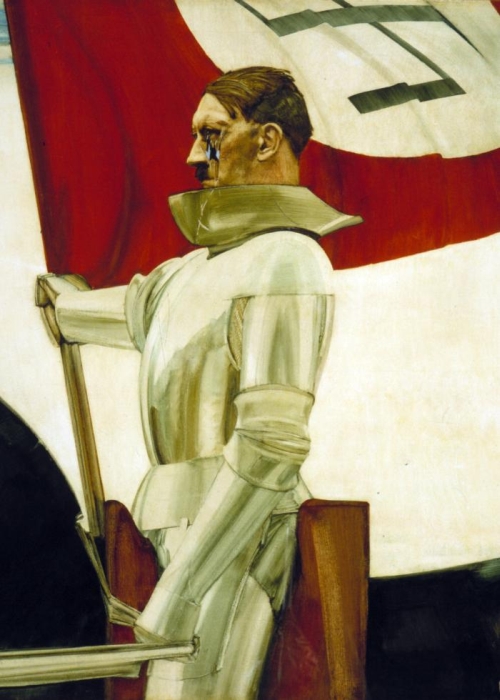The Führer as Patron and Protector of the Arts: Hubert Lanzinger’s The Standard Bearer (c. 1934–36)
Abstract
The National Socialists appropriated the figure of the “artist-soldier” from the 1920s onward. In doing so, they tapped into elements of German historical memory, specifically the convention of staging non-Jewish figures from art and politics as “great men.” At the 1933 Reich Party Congress in Nuremberg, the city presented Hitler with a copy of the famous print Knight, Death, and the Devil (1513) by the German Renaissance artist Albrecht Dürer, who was born in Nuremberg and spent his career there. Shortly thereafter, the Austrian painter Hubert Lanzinger painted Hitler as a modern Dürer knight, a “great German artist-soldier” who had come to unify the nation. The painting was exhibited at the Great German Art Exhibition at the House of German Art in Munich in 1938.
Source

Source: Hubert Lanzinger’s Der Bannerträger [The Standard Bearer] is one of almost 10,000 works of German military and Nazi propaganda art seized by the U.S. Army seized after the Second World War as part of the effort to denazify German society. This and 400 other Nazi-era artworks still considered politically charged remain in the U.S. Army’s custody today. Oil on wood, c. 1934–36. — US Army Center of Military History, Washington, DC. Available online through the United States Holocaust Memorial Museum, https://www.ushmm.org/m/img/2450324-2396x2417.jpg
U.S. Army Center of Military History, Washington, DC
Further Reading
Martina Kessel, Gewalt und Gelächter. „Deutschsein“ 1914–1945. Stuttgart: Steiner, 2019.
Birgit Schwarz, Geniewahn. Hitler und die Kunst. Vienna: Böhlau, 2009.